Royalty
Making a road safe for the Queen Mother
I'm puzzled by the timing of the operation described below. Tarmac was laid, the Queen Mother arrived and reviewed the guard of honor, then the tarmac was removed again — all within the space of two hours. That doesn't seem like long enough for the tarmac to have dried. Did they have her walking on wet tarmac?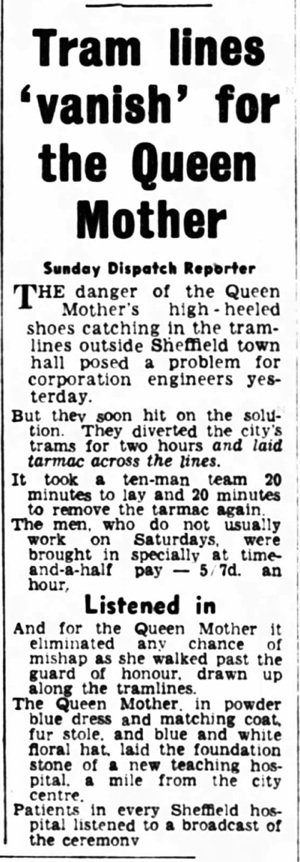
London Sunday Dispatch - May 18, 1958
Posted By: Alex - Thu Feb 22, 2024 -
Comments (3)
Category: Royalty, 1950s
The Fate of the Heart of King Louis XIV
This newspaper squib gives the essentials. But visit this page to learn more about Buckland and the incident.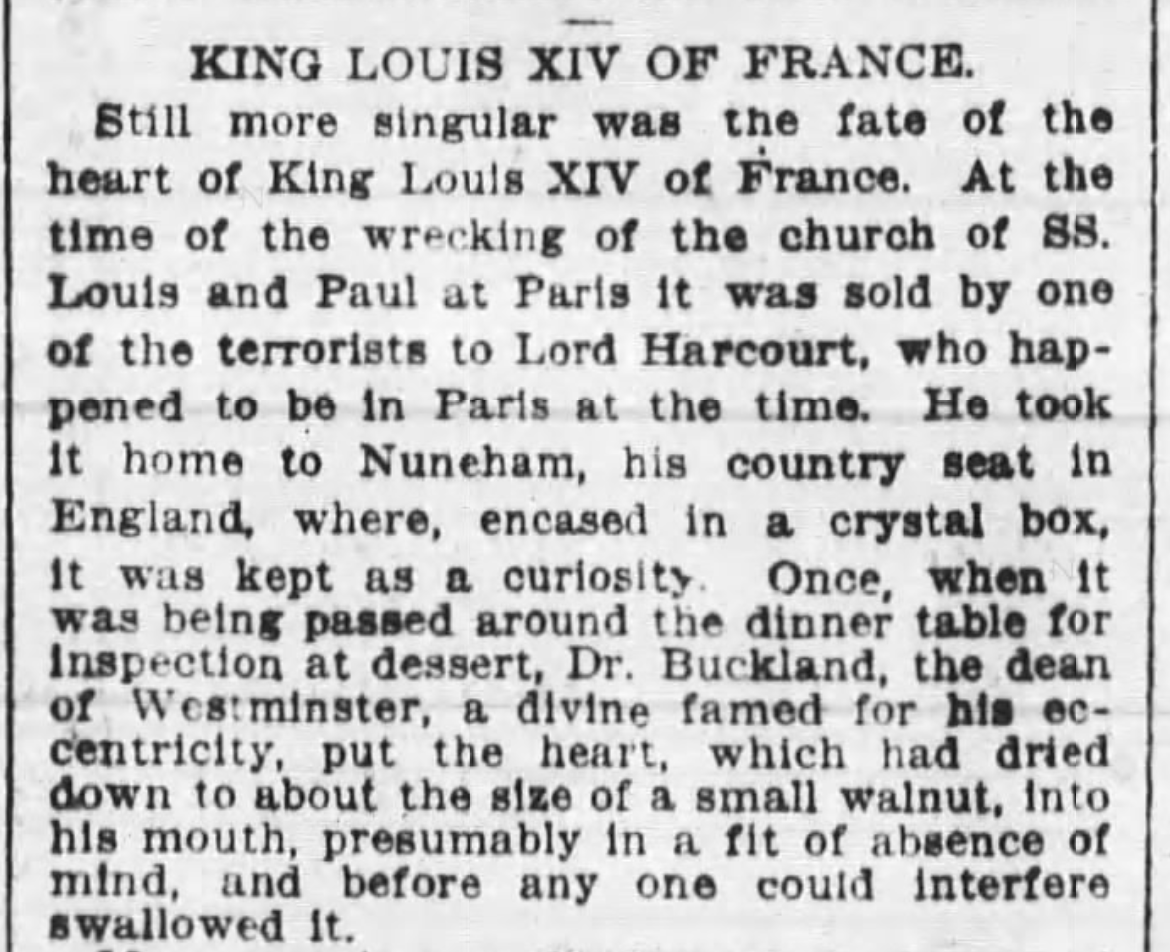
Posted By: Paul - Thu Sep 14, 2023 -
Comments (2)
Category: Body, Cannibalism, Royalty, Historical Figure
The Queen of Candy
The Queen's Wikipedia page.
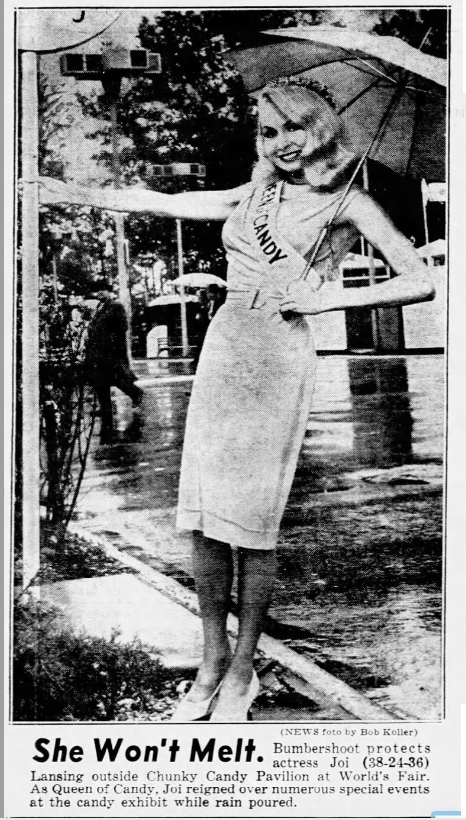
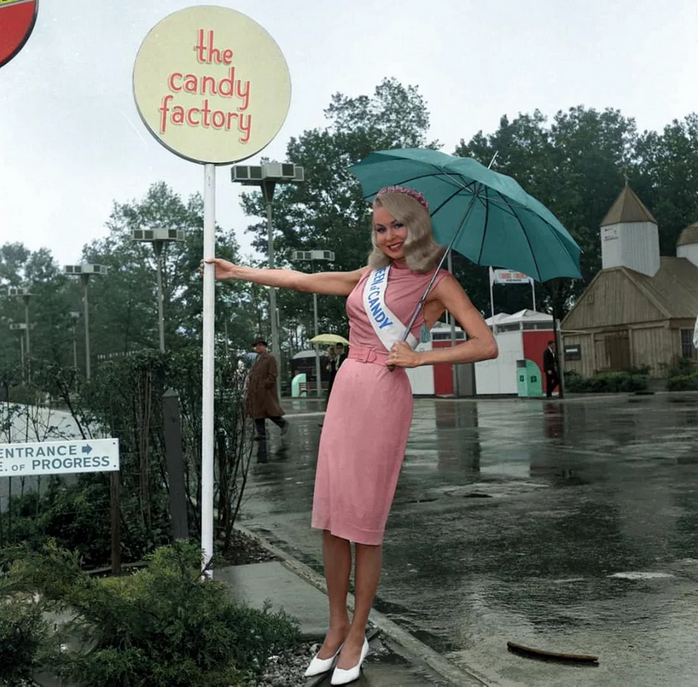
Posted By: Paul - Fri Nov 18, 2022 -
Comments (0)
Category: Beauty, Ugliness and Other Aesthetic Issues, Royalty, Expositions, World Fairs, Celebrations, Candy, 1960s
Asparagus Divination
Jemima Packington divines the future by interpreting asparagus. She calls this the art of Asparamancer. She throws the asparagus in the air, and where they land tells her the future. Using this method, she claims to have correctly foreseen Brexit, Prince Philip's death, Theresa May's resignation, and the Queen's death.The latest thing that the asparagus have told her: "King Charles will take a step back, due to his age, and make William Prince Regent."
More info: express.co.uk
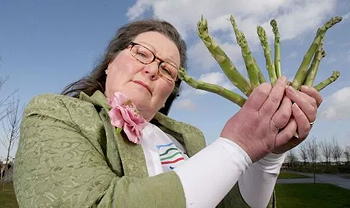
Posted By: Alex - Sat Sep 24, 2022 -
Comments (4)
Category: Predictions, Royalty, Vegetables
Bees told of Queen Elizabeth’s Death
Royal housekeeper John Chapple has carried out the duty of telling the bees kept at Buckingham Palace and Clarence House that Queen Elizabeth has died, and that King Charles is their new master."You knock on each hive and say, 'The mistress is dead, but don't you go. Your master will be a good master to you.'"
This was in accordance with the ancient British custom of "telling the bees," which we described in a post back in 2012.
More info: geo.tv
Posted By: Alex - Sun Sep 11, 2022 -
Comments (2)
Category: Animals, Customs, Death, Royalty, Superstition
Perkin Warbeck, Pretender to the British Throne
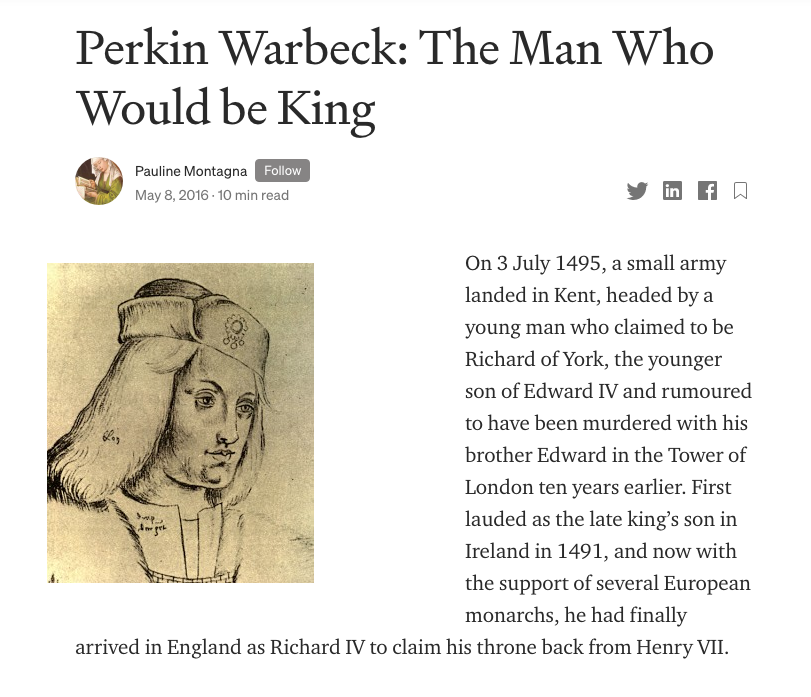
Essay here.
Dealing with Warbeck cost Henry VII over £13,000 (equivalent to £10,301,000 in 2019)
Wikipedia page.
Posted By: Paul - Sat Feb 26, 2022 -
Comments (2)
Category: History, Historical Figure, Hoaxes and Imposters and Imitators, Royalty
Double King
Posted By: Paul - Mon Aug 09, 2021 -
Comments (0)
Category: Royalty, Surrealism, Fantasy, Cartoons, Fictional Monsters
The Duchess of Windsor’s Trench Mittens
Wallis Simpson, the Duchess of Windsor, is best known as the woman for whom King Edward VIII abdicated the throne in 1936, so he could marry her. But she was also an inventor, though not a very prolific one. In 1940, she invented "trench mittens" that could be unzipped to allow a soldier to use his trigger finger.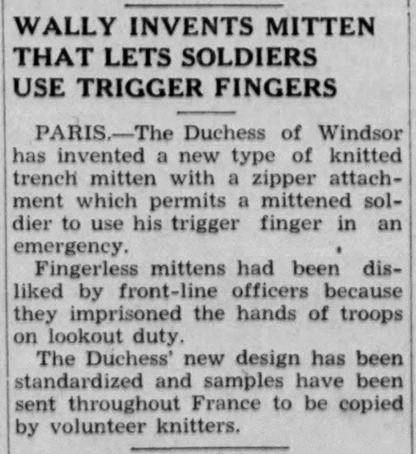
The Whitewright Sun - Feb 8, 1940
The backstory is that the Duke and Duchess were widely suspected to be Nazi sympathizers. Nevertheless, at the start of the war they were trying to make a public display of how patriotic they were. The Duke pushed to get a position in the army. And the Duchess used her fashion skills to invent "trench mittens".
But by the end of 1940, the British military had decided they were too much of a liability to keep around, so they were shipped off to the Bahamas for the duration of the war.
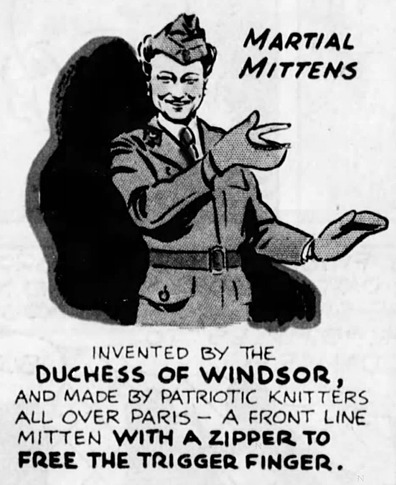
Winnipeg Tribune - Apr 6, 1940
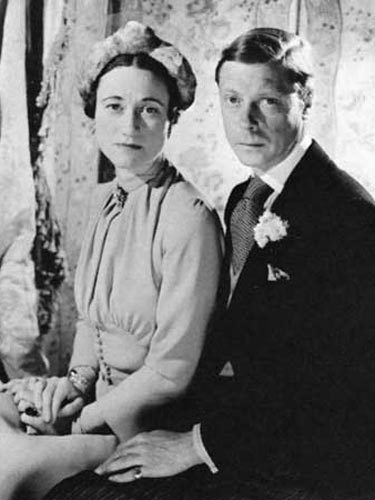
The Duke and Duchess of Windsor in 1937
Posted By: Alex - Fri Sep 25, 2020 -
Comments (1)
Category: Fashion, Royalty, War, 1940s
The toenails of King Victor Emmanuel II of Italy
Victor Emmanuel II, who was king of Italy from 1861 to 1878, had a strange habit which isn't recorded on his wikipedia page.Each year he would let the nail of his big toe grow. Then he would cut the nail off and have a jeweler polish it and frame it in gold. The king would then present this oddity to his mistress (and eventual wife), the Countess Rosa Mirafiori. She eventually accumulated fifteen royal toenails.
I assume these royal toenails must be preserved in a museum somewhere. But if so, I haven't been able to track down where. Nor can I find any pictures of them.
Unless, of course, the story is an urban legend. The lack of good sources does make me a bit suspicious.
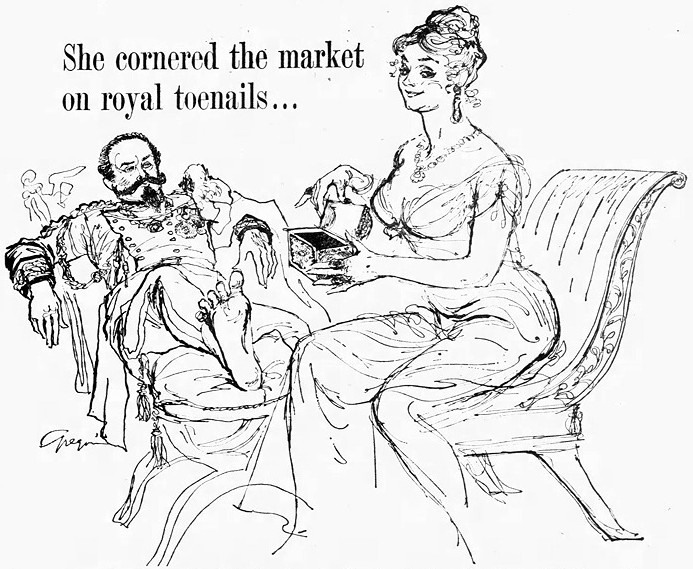
Chicago Tribune - Mar 26, 1961
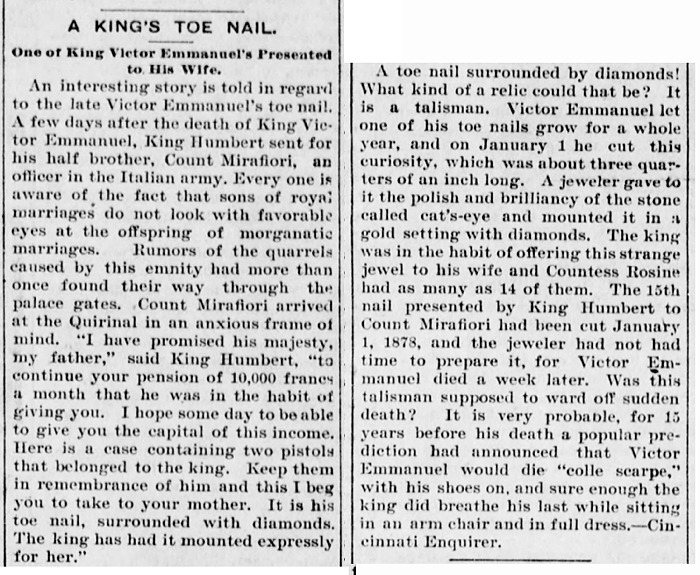
Nebraska Advertiser - May 15, 1896
Posted By: Alex - Thu Aug 27, 2020 -
Comments (3)
Category: Royalty, Nineteenth Century, Feet
Queen Mary’s Dollhouse
Queen Mary's Dolls' House is the largest, most beautiful and most famous dolls' house in the world. Built between 1921 and 1924 for Queen Mary, consort of George V, by the leading British architect Sir Edwin Lutyens, it includes contributions from over 1,500 of the finest artists, craftsmen and manufacturers of the early twentieth century. From life below stairs to the high-society setting of the saloon and dining room, and from a library bursting with original works by the top literary names of the day, to a fully stocked wine cellar and a garden, created by Gertrude Jekyll, no detail was forgotten. The house even includes electricity, running hot and cold water and working lifts. Each room is fully furnished and waiting to be explored.
The official homepage.
Article on the library therein.
Posted By: Paul - Mon Aug 10, 2020 -
Comments (2)
Category: Architecture, Buildings and Other Structures, Domestic, Enlargements, Miniatures, and Other Matters of Scale, Royalty, 1920s, United Kingdom

| Who We Are |
|---|
| Alex Boese Alex is the creator and curator of the Museum of Hoaxes. He's also the author of various weird, non-fiction, science-themed books such as Elephants on Acid and Psychedelic Apes. Paul Di Filippo Paul has been paid to put weird ideas into fictional form for over thirty years, in his career as a noted science fiction writer. He has recently begun blogging on many curious topics with three fellow writers at The Inferior 4+1. Contact Us |




